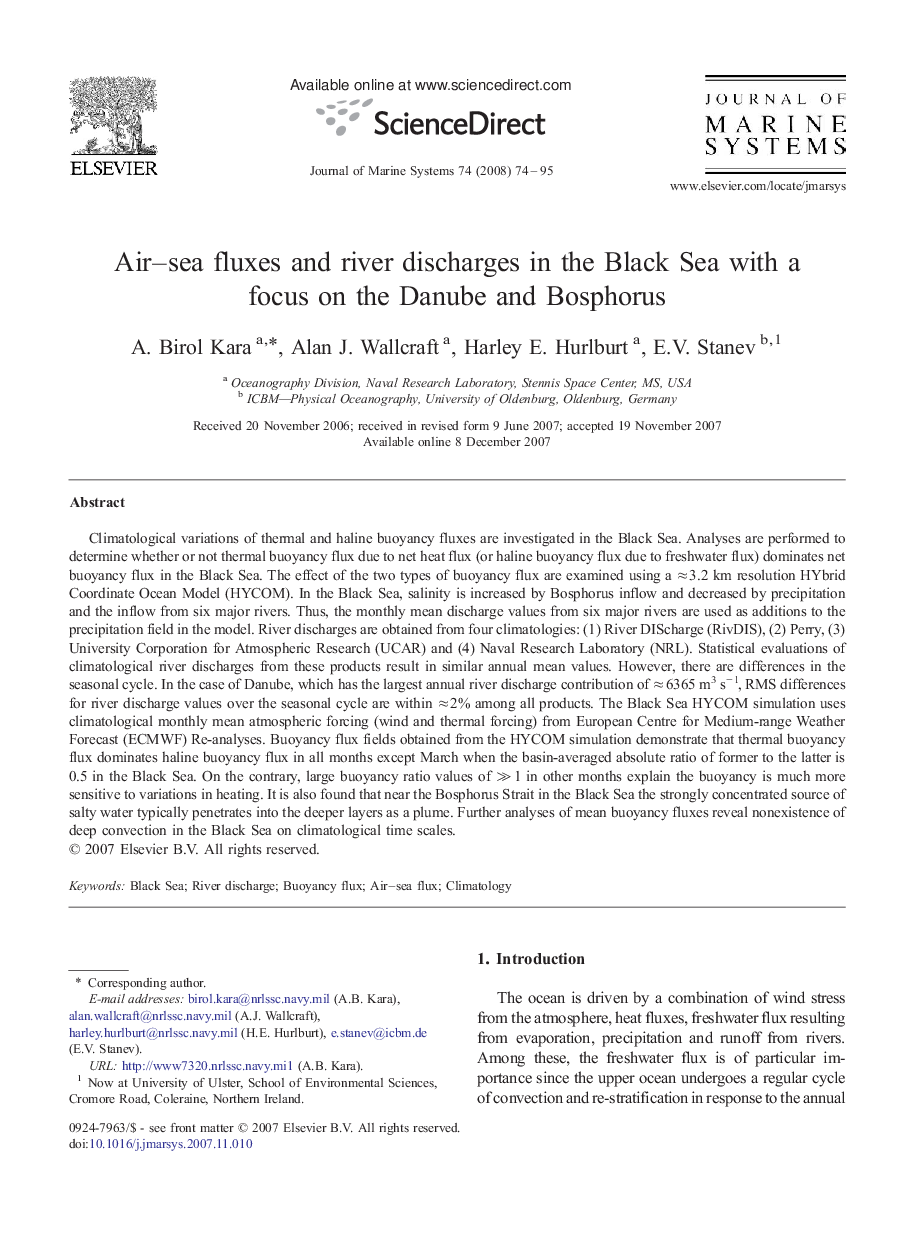| Article ID | Journal | Published Year | Pages | File Type |
|---|---|---|---|---|
| 4548989 | Journal of Marine Systems | 2008 | 22 Pages |
Climatological variations of thermal and haline buoyancy fluxes are investigated in the Black Sea. Analyses are performed to determine whether or not thermal buoyancy flux due to net heat flux (or haline buoyancy flux due to freshwater flux) dominates net buoyancy flux in the Black Sea. The effect of the two types of buoyancy flux are examined using a ≈ 3.2 km resolution HYbrid Coordinate Ocean Model (HYCOM). In the Black Sea, salinity is increased by Bosphorus inflow and decreased by precipitation and the inflow from six major rivers. Thus, the monthly mean discharge values from six major rivers are used as additions to the precipitation field in the model. River discharges are obtained from four climatologies: (1) River DIScharge (RivDIS), (2) Perry, (3) University Corporation for Atmospheric Research (UCAR) and (4) Naval Research Laboratory (NRL). Statistical evaluations of climatological river discharges from these products result in similar annual mean values. However, there are differences in the seasonal cycle. In the case of Danube, which has the largest annual river discharge contribution of ≈ 6365 m3 s− l, RMS differences for river discharge values over the seasonal cycle are within ≈ 2% among all products. The Black Sea HYCOM simulation uses climatological monthly mean atmospheric forcing (wind and thermal forcing) from European Centre for Medium-range Weather Forecast (ECMWF) Re-analyses. Buoyancy flux fields obtained from the HYCOM simulation demonstrate that thermal buoyancy flux dominates haline buoyancy flux in all months except March when the basin-averaged absolute ratio of former to the latter is 0.5 in the Black Sea. On the contrary, large buoyancy ratio values of ≫ 1 in other months explain the buoyancy is much more sensitive to variations in heating. It is also found that near the Bosphorus Strait in the Black Sea the strongly concentrated source of salty water typically penetrates into the deeper layers as a plume. Further analyses of mean buoyancy fluxes reveal nonexistence of deep convection in the Black Sea on climatological time scales.
